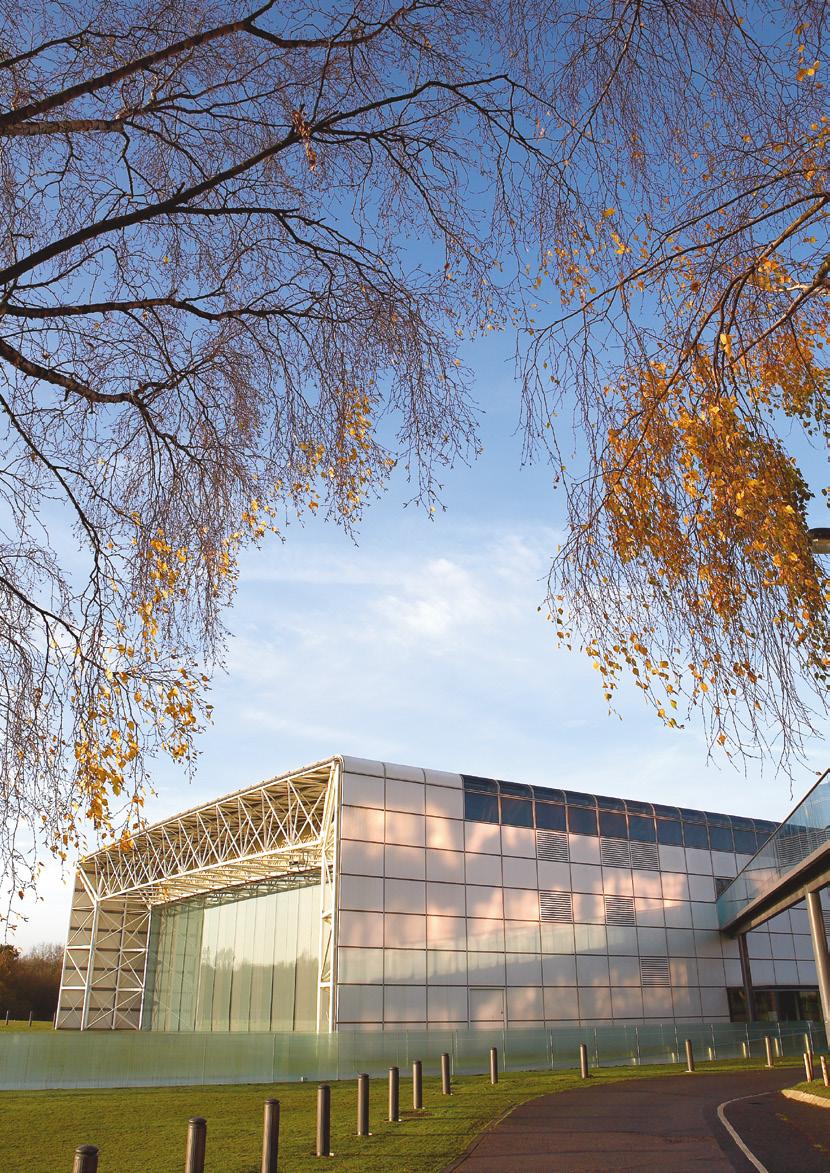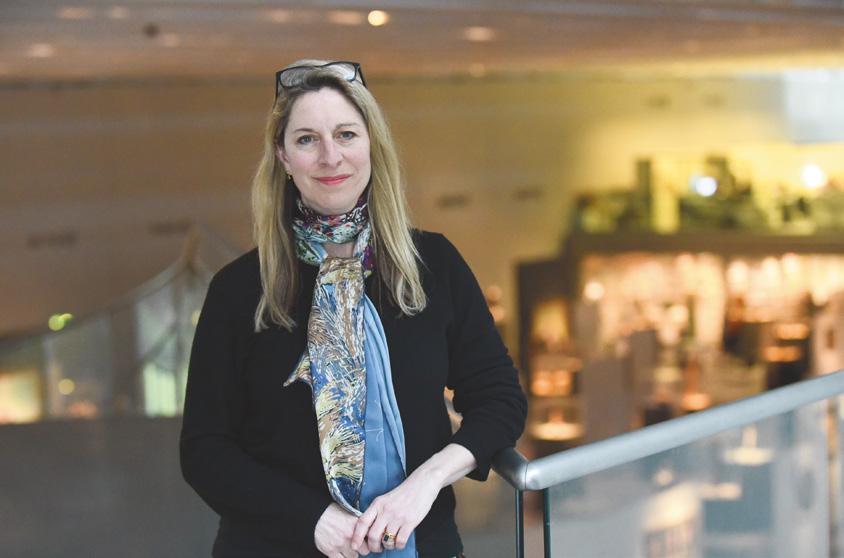
4 minute read
Art of the possible
How one transformational gift founded the Sainsbury Centre on the UEA campus.
As a bachelor in my early twenties,” said Robert Sainsbury, “I bought my first work of art solely because it evoked an immediate visual response.” That first purchase was in 1929. Eight years later, Robert married Lisa and the Lord and Lady set about amassing one of the greatest private art collections of the 20th century. After the Second World War, they set up a dedicated art account with which, on relatively modest budgets, they acquired remarkable pieces – relying on eye and judgment rather than spending power. Their refreshingly authentic approach would lead to personal friendships with great figures such as Henry Moore when he was a young and unknown artist, Francis Bacon, Alberto Giacometti and Lucie Rie.
Advertisement
THE BIRTH OF AN IDEA
Almost 50 years, and 570 works of art later, Robert and Lisa decided that they wanted others to enjoy their collection as much as they had. Their art was given to the University of East Anglia and the Sainsbury Centre was born. The Centre is now one of the most prominent university art galleries in Britain and an internationally-renowned home for art in Norwich. Ghislaine Wood, Acting Director at the Sainsbury Centre, reveals how, to this day, Robert and Lisa’s wishes define the way that visitors engage with the artworks on display. “The Sainsburys wanted people to be able to view the pieces just as they had been able to in their own house,” she explains, “which was a unique way of showing art in 1978. Their collection is not divided up by geographical region or ethnographic group. There is an equality of treatment across the arts – so you can see a Francis Bacon painting next to a fang head, with no distinction between how the two are displayed or interpreted. “The Sainsburys chose Sir Norman Foster, a relatively young architect who had never designed a public building
THE SAINSBURYS CONCEIVED OF A NEW KIND OF MUSEUM – A NEW WAY OF SHOWING ART.
before being commissioned to design the Sainsbury Centre. The building is in itself a magnificent gift to the University and region. Their vision was for the space to become a hub for interdisciplinary learning on the campus. We’re at the end of the Lasdun Wall, and the idea was that the Centre would be a place for scientists and artists to meet. Really, it changed the way that people understood the modern museum.
A DIVERSE HISTORY OF ART
“It’s such a special collection of pictures and objects. We have 5,000 years of human creativity on display, reflecting regions across the world. They gave the University some of the most significant collections of the work of Francis Bacon, Alberto Giacometti and Henry Moore – giants of the post-war art world. The collection is priceless and we are deeply grateful to the Sainsburys for their extraordinary gift. “It was always their wish to keep the collection as a whole, which is something other institutions may not have been able to facilitate. That’s part of why they chose UEA. It just goes to show the incredible energy there must have been around the University even back then – a greater sense of freedom that you can still see and feel today.” u
Above: Ghislaine Wood in the Sainsbury Centre’s galleries. Below: Lord and Lady Sainsbury tour the building with architect Sir Norman Foster. © Foster + Partners

u THE SUPPORT CONTINUES Dominic Christian, Chairman of the Board, Sainsbury Centre for Visual Arts, said, “We couldn’t function without the support of benefactors. It started with the Sainsburys and of course continues with the great generosity of their son, Lord Sainsbury of Turville, and the support of the Gatsby Foundation. Much of our activity is funded by sponsorship and we hope to grow our community of patrons who enjoy being part of one of the most significant art collections in the world.” “I’d like to offer my personal thanks to all of our wonderful supporters,” Ghislaine continues. “I came to the Sainsbury Centre after 20 years as a senior curator at the V&A. To move from such a large, well-established organisation to a relatively young one was really exciting. And that excitement hasn’t gone anywhere in the years since! I can’t wait to see how the Centre will continue to grow and develop long into the future – all of which began with that one extraordinary couple.”
EVERY THING WE HAVE ACHIEVED IS DUE TO PHILANTHROPY.

A GIFT FOR JAPANESE STUDY
In 1999, Robert and Lisa Sainsbury once again showed their generosity when they endowed the Sainsbury Institute for the Study of Japanese Arts and Cultures to promote world-class research and be a leader in the study of Japanese arts and cultures, past and present. Over the last two decades, the Institute has built a global network of research and outreach activities, with close ties to Japanese universities and partnerships with the British Museum, The Japan Society and specialist publishers. Its latest initiative is the launch of a new MA in Interdisciplinary Japanese Studies.










